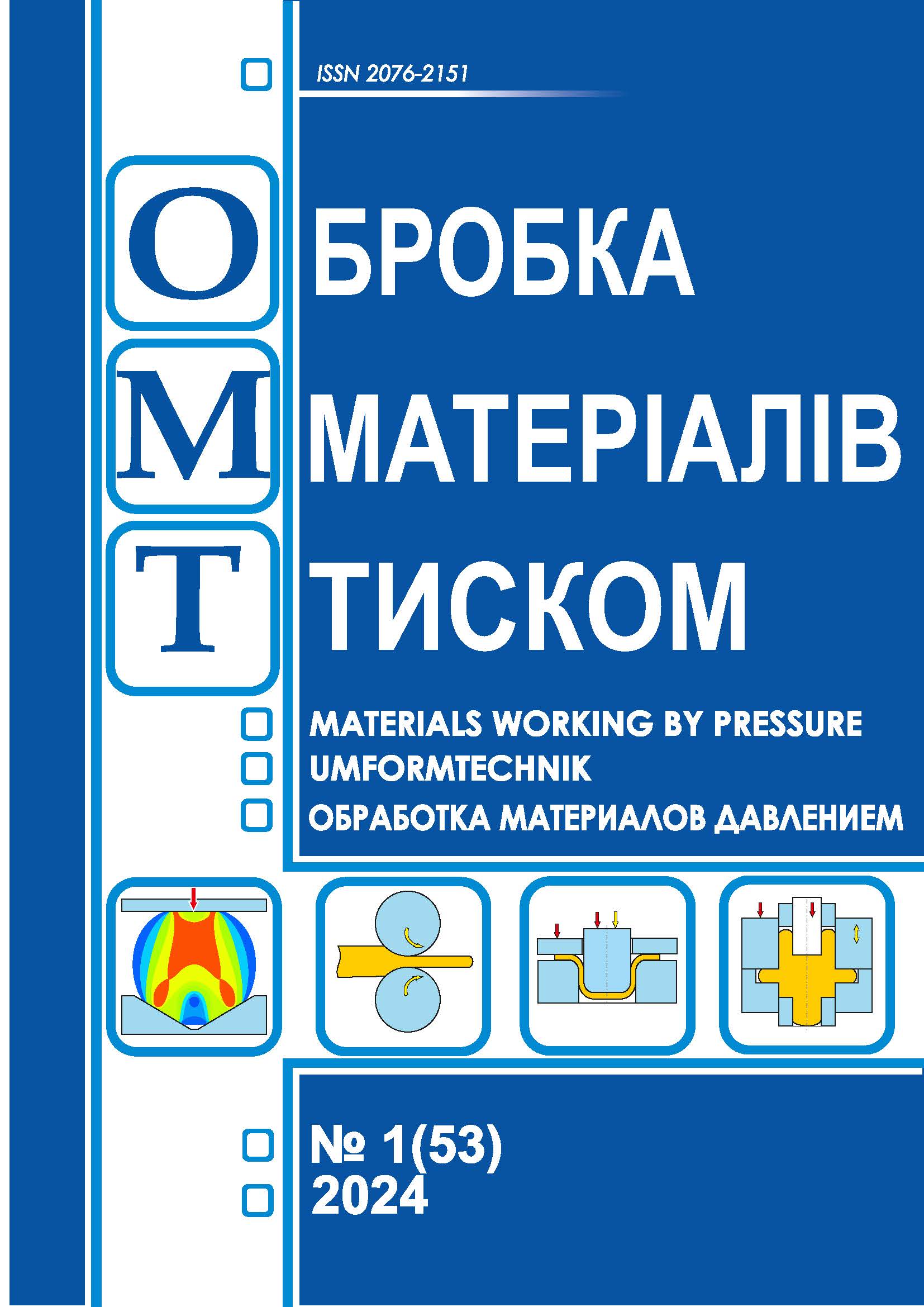Study of the influence of tube rolling parameters on the working conditions of the pqf mill mandrel
DOI:
https://doi.org/10.37142/2076-2151/2024-1(53)143Keywords:
continuous rolling, seamless hot-rolled tube, three-roll mill PQF, held mandrel, finite element simulation, full-factorial experiment, regression equation.Abstract
Kondratiev А., Samsonenko A., Bobukh O., Kuzmina O., Reviakin D., Spector S. Study of the influence of tube rolling parameters on the working conditions of the pqf mill mandrel
The work is devoted to the analysis of the process of seamless steel pipes production by hot rolling at continuous rolling mill with three-roll cages, namely the PQF. The scheme of rolling pipes on held mandrels in three-roll continuous mills is given. The influence of pipe rolling parameters at the PQF mill on the working conditions of the technological tool - the mandrel - is investigated.
It is shown that the working conditions of the mandrel in the process of rolling on the PQF mill depend significantly on four main factors: the rolling forces acting on the rolls and on the mandrel; friction conditions on the contact surfaces of the pipe with the mandrel; time of the mandrel and billet contact in the deformation zone; speed of sliding metal of the pipe relative to the mandrel. The study is carried out using finite element simulation in the QForm UK program using the method of a full factorial experiment 23.
A model of the deformation for a steel cylindrical workpiece with an initial diameter of 200 mm and a length of 800 mm in the first two cages of the five-roll mill was created; the plan of the experiment is given. The input factors are determined - the thickness of the pipe wall, the coefficient of friction, the speed of movement of the mandrel. Normal stress in the center of deformation, friction force, elongation coefficient, speed of the pipe at the exit from the cage, specific friction forces were selected as output factors (response functions). The results of calculations were processed to obtain regression coefficients. According to the results of the study, it was concluded that the influence of input factors on the target functions for the first and second cages of the mill differ: if for the first cage, the influence of each of them has approximately the same effect on the force of friction, then in the second cage the friction coefficient and speed of mandrel show the greatest influence.

